For convenience, this section includes all the other observed Land birds and they have been grouped as other Passerines (perching and song birds).
Black-faced Cuckoo Shrike (Coracina novaehollandiae)
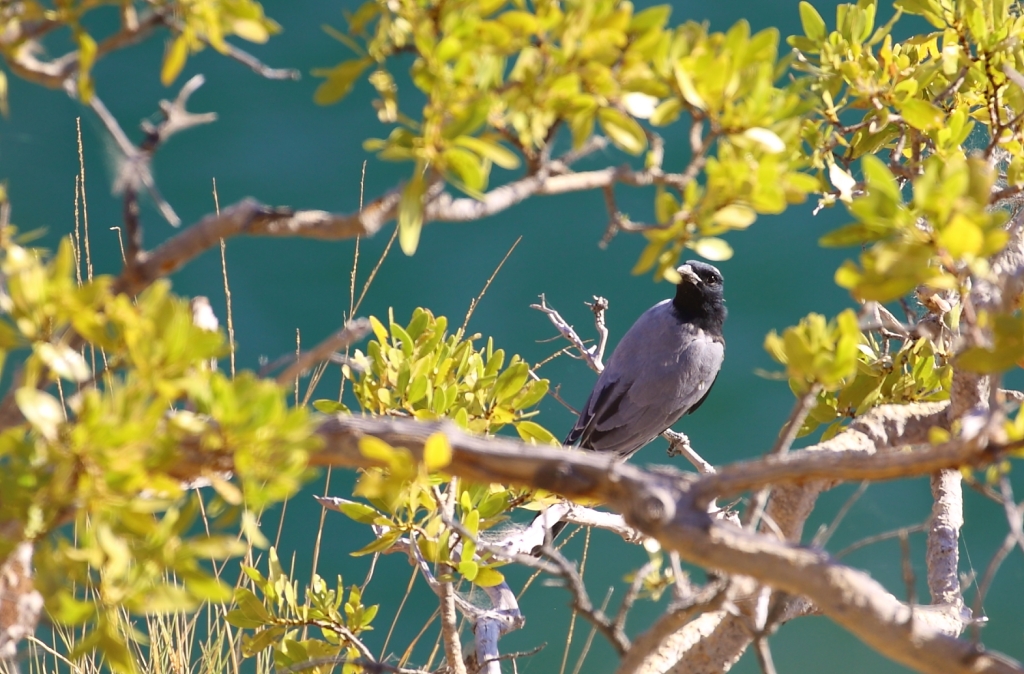
A migratory bird seen irregularly at The Cape usually within the warmer months. The one observation was in the coastal reserve near the F Break carpark.
Grey Butcherbird (Cracticus torquatus)

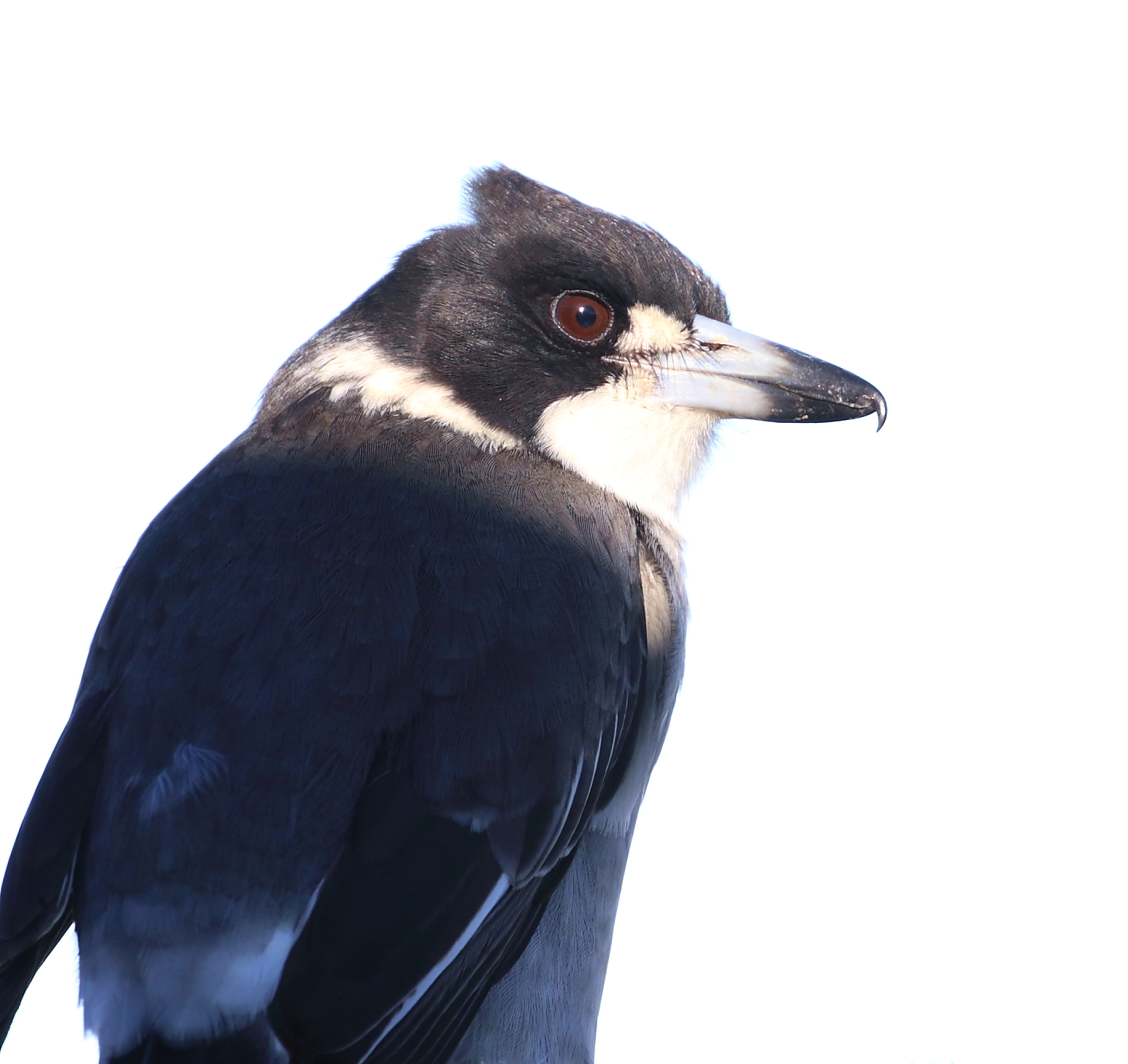

A very common bird around The Cape both within the coastal reserve, the wetlands and around the homes and streetscapes. It is usually seen perched on a fence or open tree trunk carefully watching for prey. It has the most vicious looking hooked beak used for piercing prey. Juveniles have a lovely brown plumage before transitioning into the grey, black and white colourings of an adult.
A standout song bird with ‘loud rollicking and varied song … including melodious phrases, brisk rising and falling notes and throaty warbles’. It is absolutely lovely to listen to.
Australian Magpie (Cracticus tibicen)

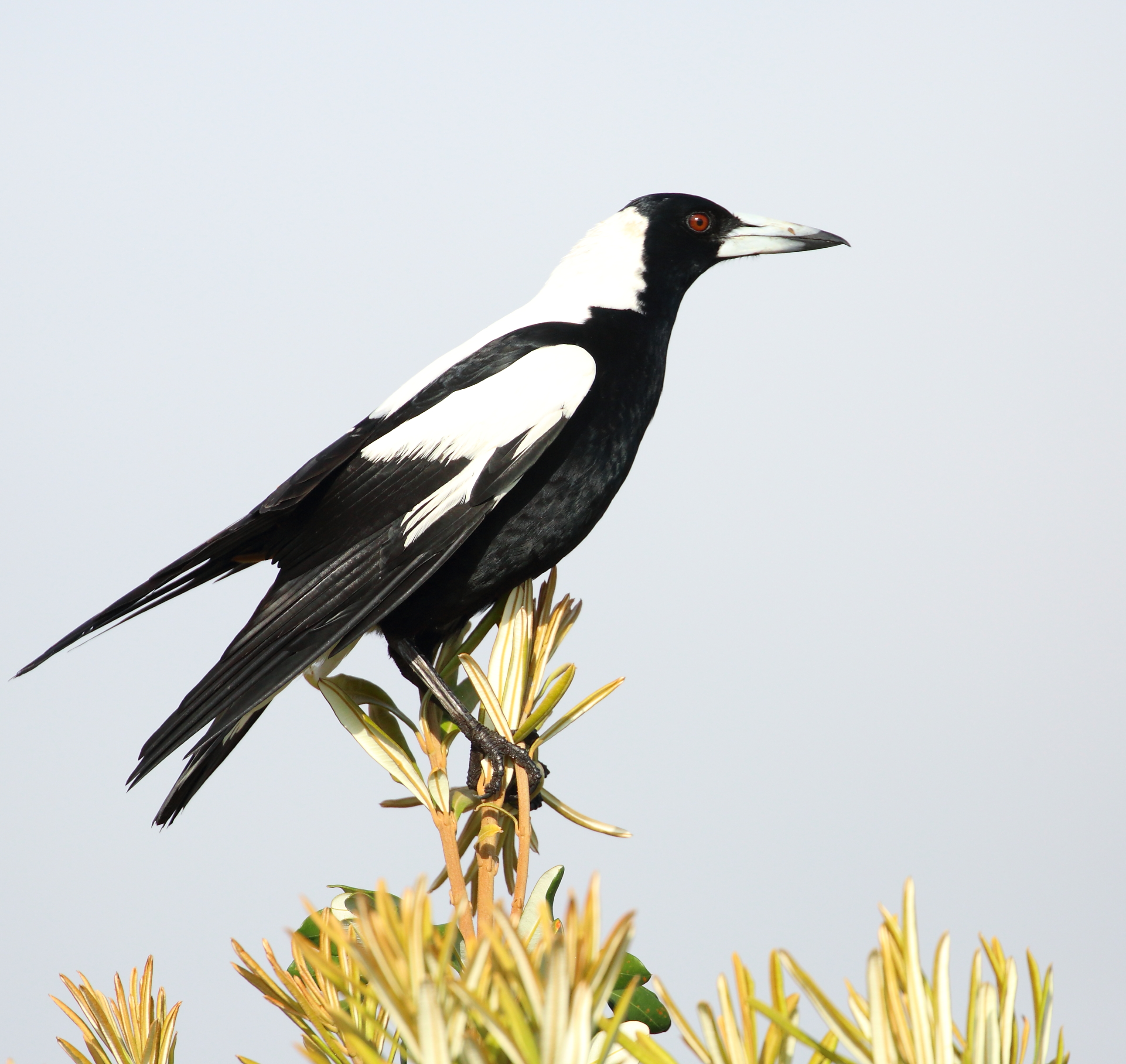
Our resident Australian Magpie species is the white-backed form. The male has a clean white back whereas the female has some grey tinge, and juveniles have a grey-brown plumage before growing into the well-known black and white colours. They are very common all around The Cape habitat sectors. At home on the ground or perched in a tree stag where it surveys its territory for prey. Breeding season (springt time) comes with it’s territorial defence behaviour including aggressively swooping humans and other birds. Nests are built in the top of swamp paperbark trees. Has a characteristic territorial song of ‘melodious gargling yodels … and warbles’.
Little Raven (Corvus mellori)


Another very common resident bird of The Cape, particularly in the open spaces, streetscapes and housing areas. Adults have a stunning black, shiny plumage with piercing white eyes, juveniles are more dull in colour with brown eyes and pink colouring on the lower bill. Highly intelligent bird who adapt to human environments for feeding and scavenging. Socialise in small flocks.
Magpie Lark (Grallina cyanoleuca)


Another bird that is comfortable around all of The Cape habitats but is seen especially on the ground feeding on invertebrates and seeds in grassy areas. Usually seen in adult pairs – the male has a black face and throat and the female a white face and throat. Also known as the Mudlark or Peewee.
Grey Fantail (Rhipidura albiscapa)


A lovely, small and very common bird that flits about in the coastal reserve and on its edges and occasionally ventures into the streetscapes. Very commonly seen in season along the exit track in the south east sector. It normally migrates away in winter and returns in spring. A very inquisitive bird it will often show interest in our movements and “dance” around us as we walk along. Has a pleasant song of of variable high pitched squeaks, trills and chatters, usually from a perched position in the top of shrubs. The fanned tail is a sight to see!
Willie Wagtail (Rhipidura leucophrys)
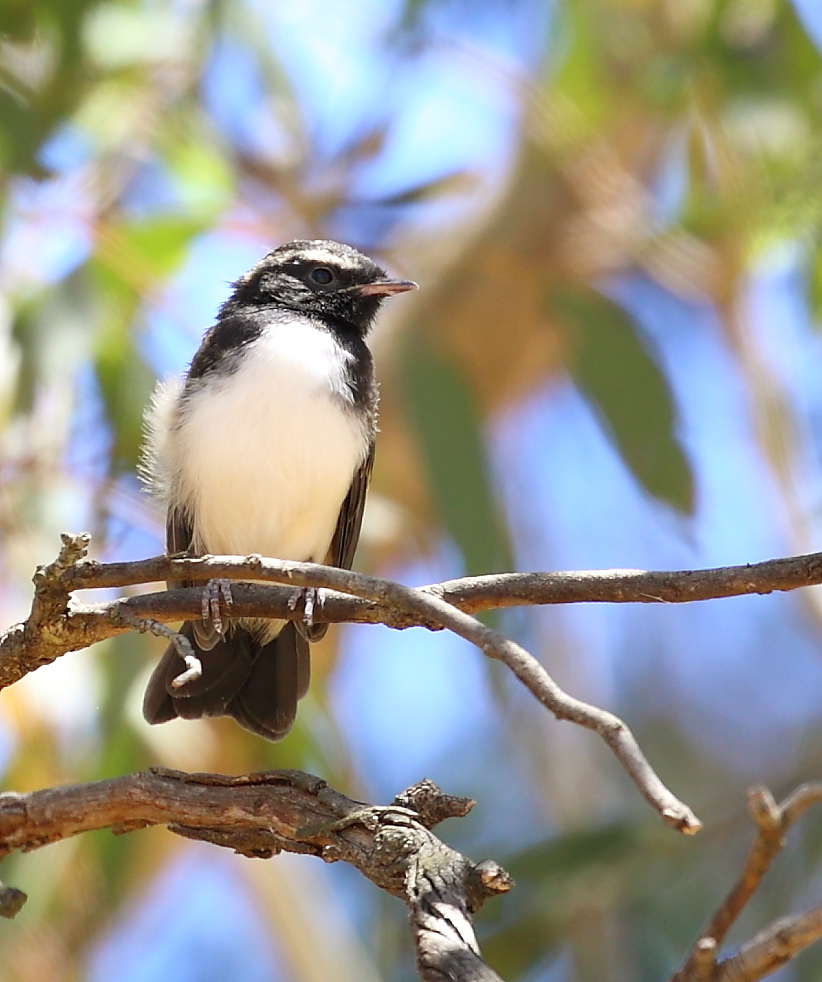

Although a very common bird throughout Australia, they are irregular visitors to The Cape. Mostly seen flitting about the wetland complexes where it perches on the fence and forages for insects in the vegetation below. Noticeable for its tail wagging sideways continuously while calling out.
Eastern Yellow Robin (Eopsaltria australis)

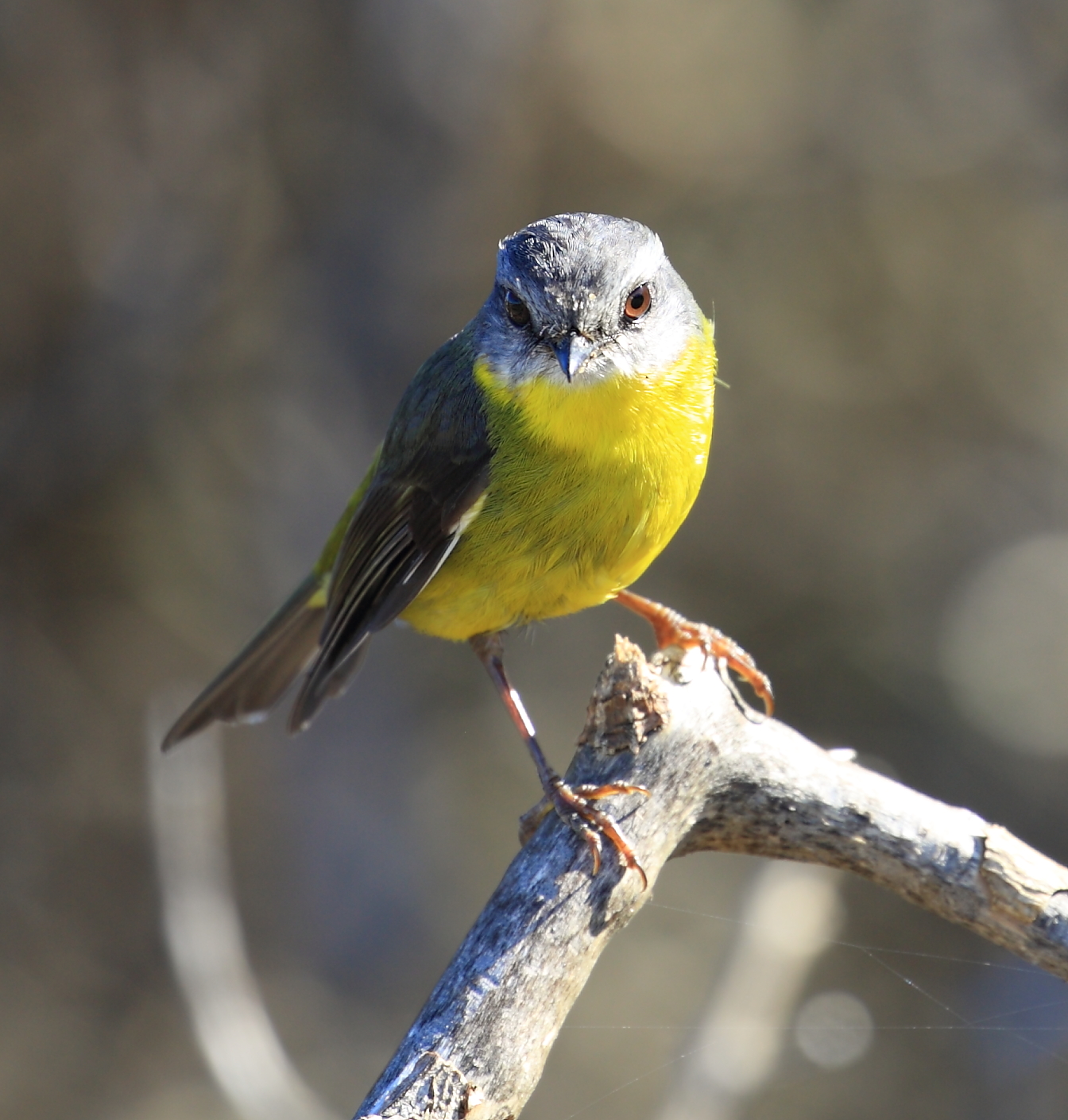

A small, beautiful robin of the coastal woodland with a distinctive territorial call by the male of a ringling ‘chop chop’ heard throughout the coastal reserve and in the south east sector. Mainly seen singularly and often deep within the dense heath and woodland understory where sometimes it you might catch a glimpse when it inquisitively perches in the open , head cocked, ready to pounce on insects. Beautiful yellow, grey and white plumage, the same in both sexes.
Flame Robin (Petroica phoenicea)


Another one of the stunning robins around The Cape, the Flame Robin is a migratory species which usually appears around autumn and winter after spending the rest of the year in the higher country for breeding. It may be seen in small flocks but more normally singularly. Good spots to see it are on the edge of the coastal reserve and among the south east sector where its coloured plumage stand out. The male has a striking red-orange chest from chin to belly and a small white spot on the forehead. The female is more sandy-brown and lacks the white facial marking. Use open woodland understory to feed and sometimes come out in the open to perch and look for invertebrate prey.
Scarlet Robin (Petroica boodang)
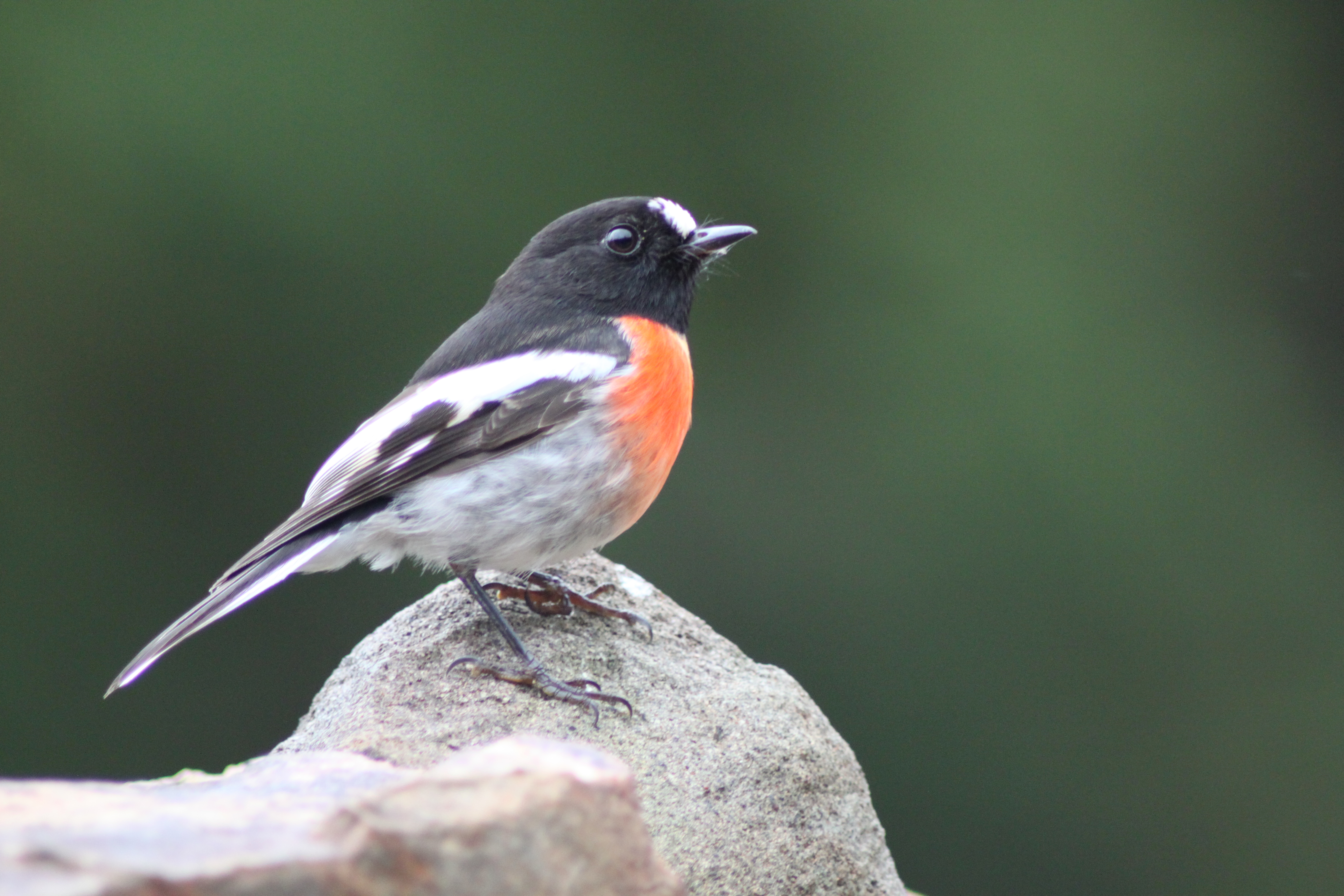
Very similar in appearance to the Flame Robin, bit the male bird has a scarlet breast and black throat, and is more plump and a little smaller. Mostly seen singularly or in pairs in similar habitat to the Flame Robin, it also is an autumn/winter migrant to The Cape.
Crested Shrike-tit (Falcunculus frontatus)


An illusive bird to see around The Cape more often heard in the coastal reserve bush. Feeds on insects by ripping bark away from scrub.
Rufous Whistler (Pachycephala rufiventris)
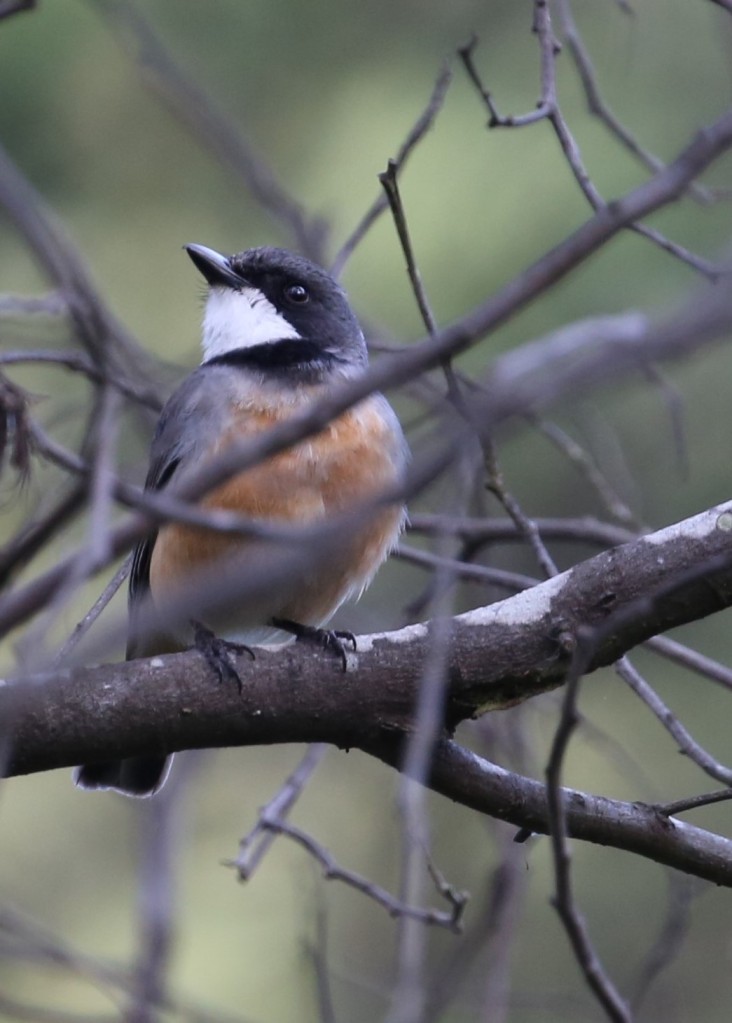
Normally only seen in forests and woodlands, this summer migrant to SE Australia surprisingly showed up in the Stage 1 housing area where it was spotted and identified by an observant resident. It has a beautiful call which is a feature of the Australian bush during their breeding season. Stand out features for the male are the white throat and rufous underparts separated by a black breast band.
Olive Whistler (Pachycephala olivacea)

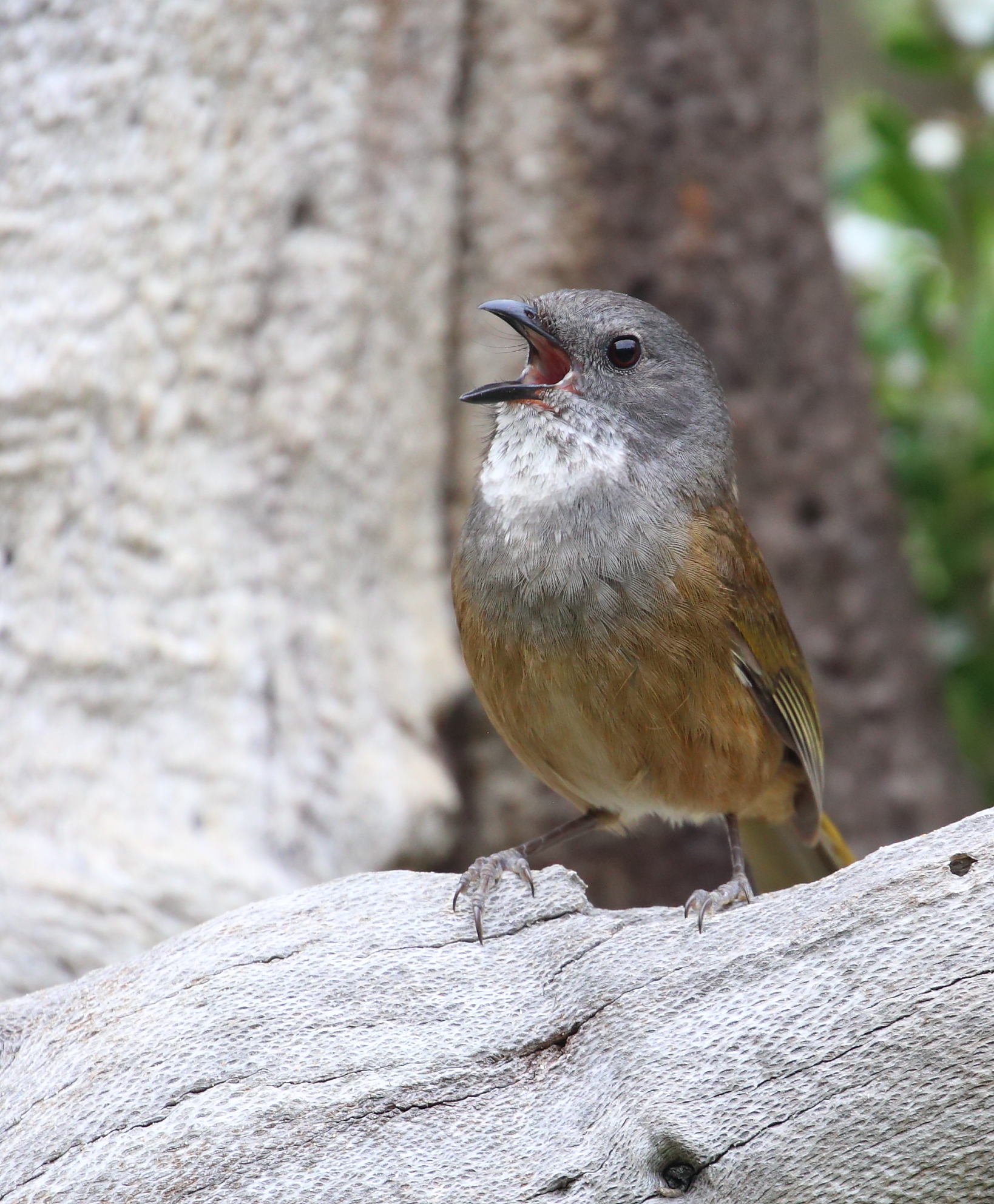

Absolutely beautiful call by this drab whistler is a highlight of spring time, where its songs emerge from the coastal bush and heath. They are illusive and generally heard before they are seen. They feed in low shrubs and on the ground which makes it more difficult to see especially among the thick vegetation of the coastal reserve. They have been heard and seen in the South East sector and the Coastal Reserve. The male has drab olive plumage with a white throat with grey head.
Grey Shrike Thrush (Colluricincla harmonica)


One of my favourite birds with a beautiful song and expressive features when perched on a branch listening for prey within shrubs or on the ground. Has an undulating flight action. Plumage is grey with a brown back and black bill. Our sub species is harmonica. They inhabit The Cape all year round and are easily seen in the south east sector on the exit walking track and amongst the coastal reserve bush. They eat small vertebrates, unfortunately including small birds.
Silvereye
Stunning little birds with distinctive silver eye rings, an olive head and grey back. Fast moving birds which inhabit thick understory vegetation where they feed in small flocks on sugary liquids from flowers and fruits, moving as a group from one flora patch to the next. They are predominantly seen in the coastal reserve and are common in the south east sector where they can be observed from the 2nd Surf exit walking track.
There are two sub-species observed at The Cape: the westernensis and the lateralis. They are migratory and are generally only seen around The Cape from spring through to autumn.
ssp westernensis (Zosterops lateralis)


Stunning little birds with distinctive silver eye rings, an olive head and grey back. This sub-species moves further north into mainland Australia during winter.
Silvereye ssp lateralis (Zosterops lateralis)


The main difference between this bird and the westernensis is the rufous, brown coloured flanks. Remarkably, this little bird, weighing in around 12 grams, migrates from Tasmania and flies non-stop over Bass Strait which is a remarkable feat.
Little Grassbird (Megalurus gramineus)


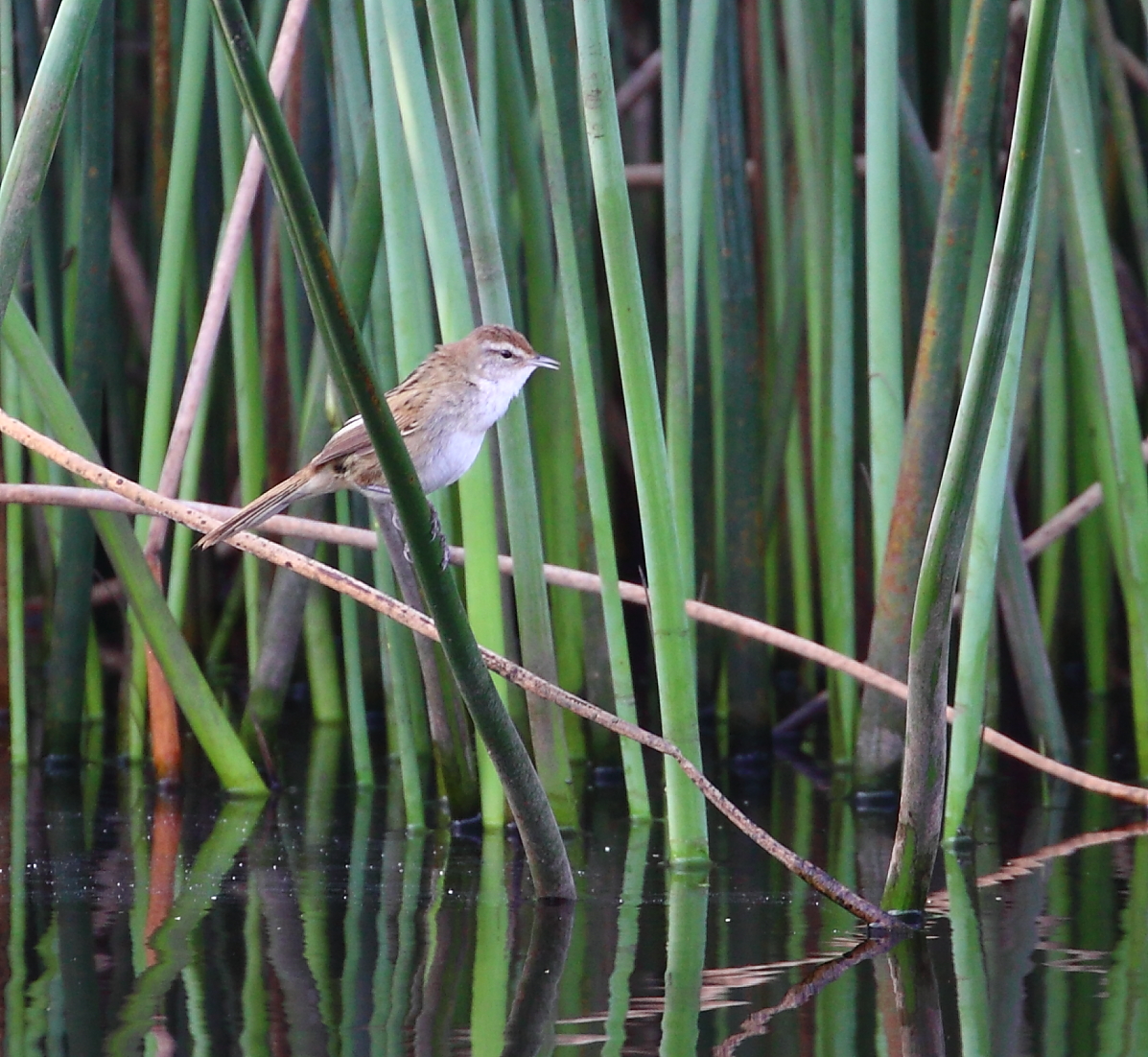
A small, quick fleeting bird that inhabits dense wetland vegetation . It is more likely to be noticed by its song during the spring breeding season when it repeatedly calls a distinctive sequence of 2-3 piping whistles “p-pee-pee” from dense cover or occasionally from an exposed perch. Loves the thick growth of ephemeral sedges and reeds around the wetlands where it darts into the darkness and moves through the vegetation, occasionally popping out on a small reed perch. Difficult to see most of the time, it takes short flat flights to new cover if disturbed. Sparrow like colouring with a streaked crown and obvious dark eye-stripe. Currently inhabiting the Central Wetland Complex where it may colonise if conditions are right.
Eurasian Skylark (Alauda arvensis) INTRODUCED


An introduced bird of the open grassy spaces of The Cape. It has a beautiful song. Mainly occupies grassy/tussocky areas so it is easily observed around the central creekline, open spaces and empty house sites where it forages on the ground. What fascinates me about this bird is its vocal flight behaviour where it is seen hovering and singing a loud stream of melodious trills, and then breaking into a free fall descent to resume ground foraging. They are more commonly seen and heard from spring into the summer months.
Australian Pipit (Anthus australis)

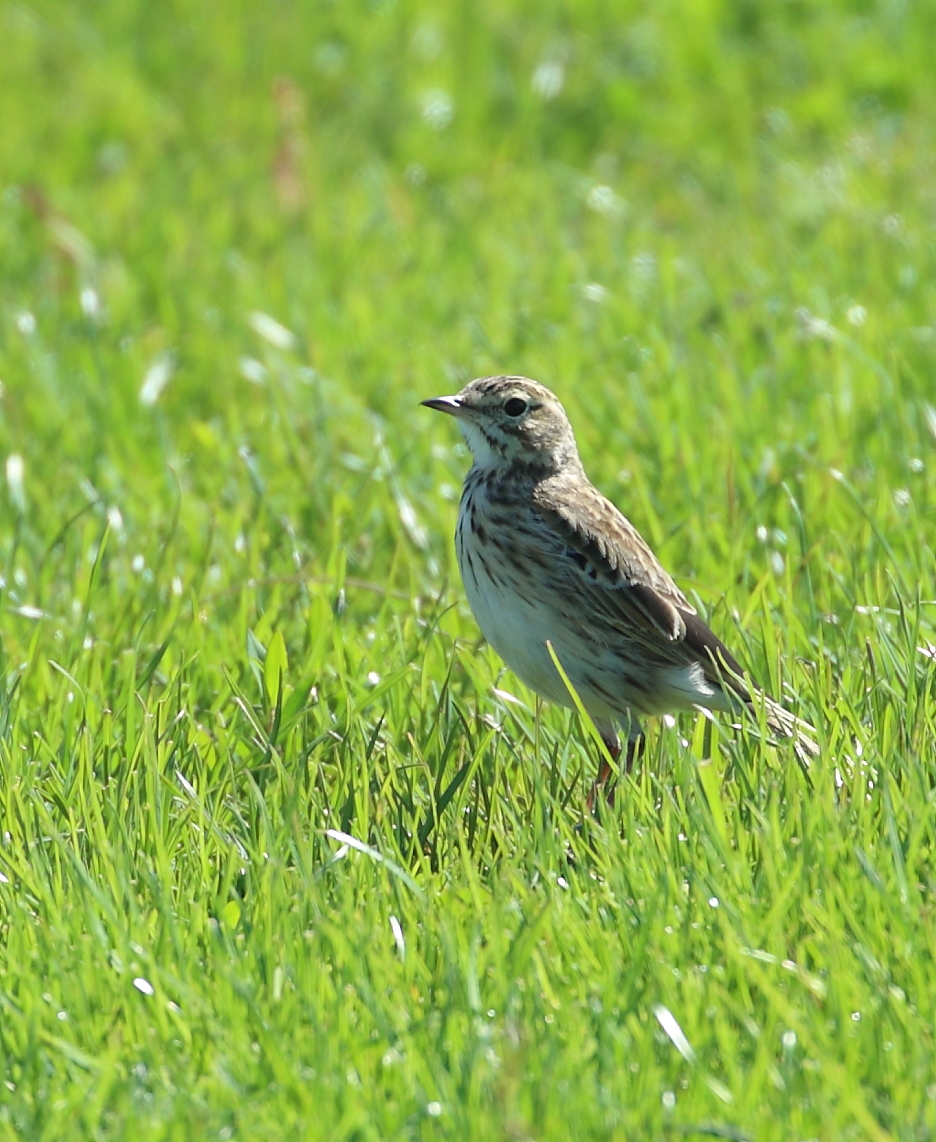
An indigenous species that looks very similar to the Eurasian Skylark but is slimmer and more upright in stance. Sometimes performs aerial song calls, but is more of a ground dweller. More often seen running and strutting along the ground and bobs its tail when it pauses from running, often standing on raised objects to observe its surrounds. More commonly seen in the open grassy areas in the western side of The Cape and along the sides of the ancient sand dune ridge in the south west sector.
Common Blackbird (Turdus merula) INTRODUCED


A very common introduced bird of seen in all habitats at The Cape. Has a melodious song especially during spring and is an alert and active bird with upright stance, tail cocked and short flight into vegetative cover.
Common Starling (Sturnus vulgaris)
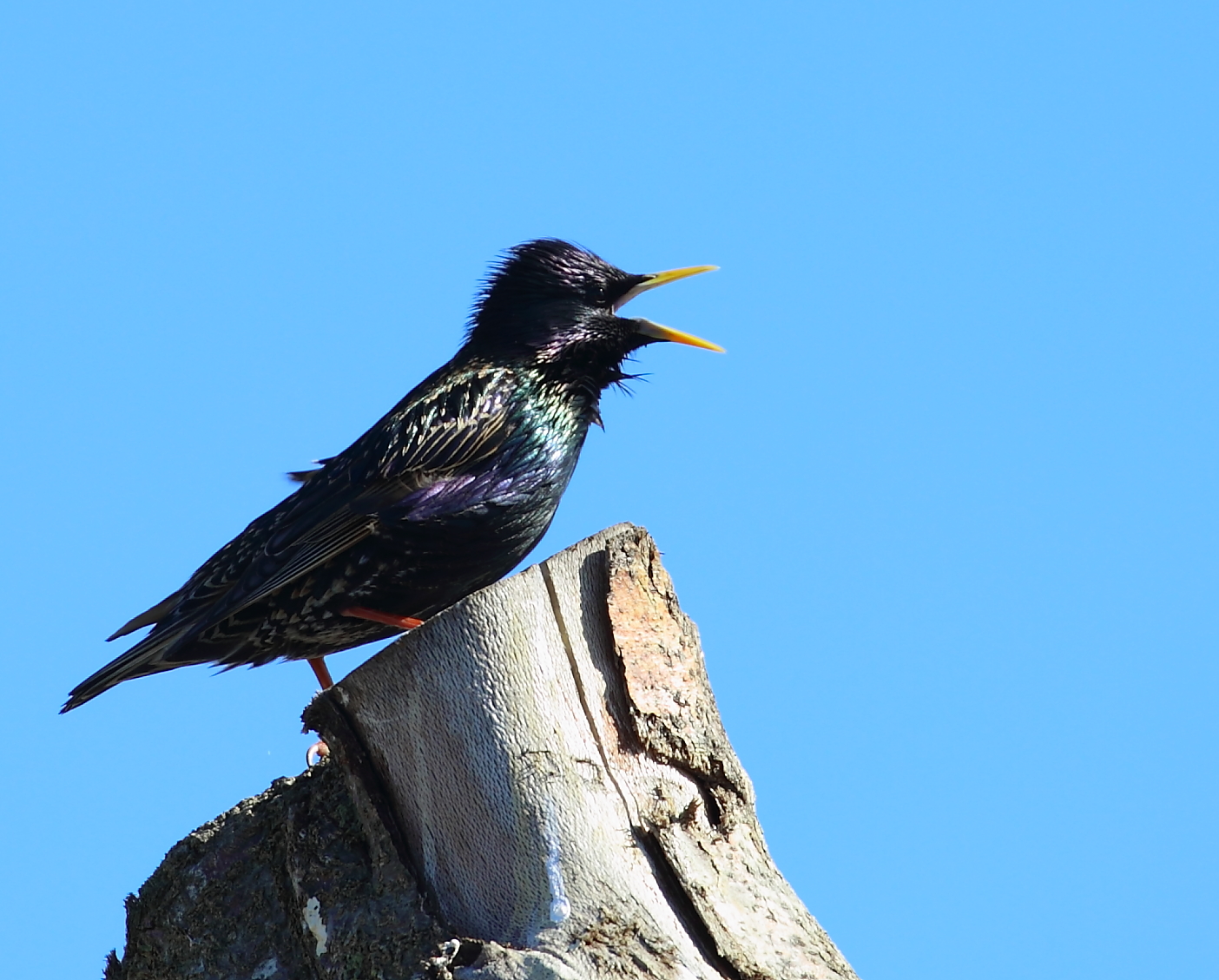

Very common introduced bird of seen in all habitats at The Cape. Can gather into large flocks throughout summer.
Red-browed Finch (Neochmia temporalis)


A beautiful indigenous finch easily identified with its red bill, brow and wing tips against a grey chest and olive back and wings. It moves around in small flocks and is predominantly a ground forager amongst grasses. Very fast on the move and moving in flocks, it occasionally pauses on open perches before descending to the ground. Most commonly seen in the coastal reserve bush, its edges and in the south east sector. Will often be seen in conjunction with small flocks of House Sparrow.
House Sparrow (Passer domesticus) INTRODUCED


The introduced House Sparrow has fortunately been seen more in the natural bush settings of The Cape and has not reached feral status amongst the streetscape and house gardens.
European Goldfinch (Carduelis carduelis) INTRODUCED
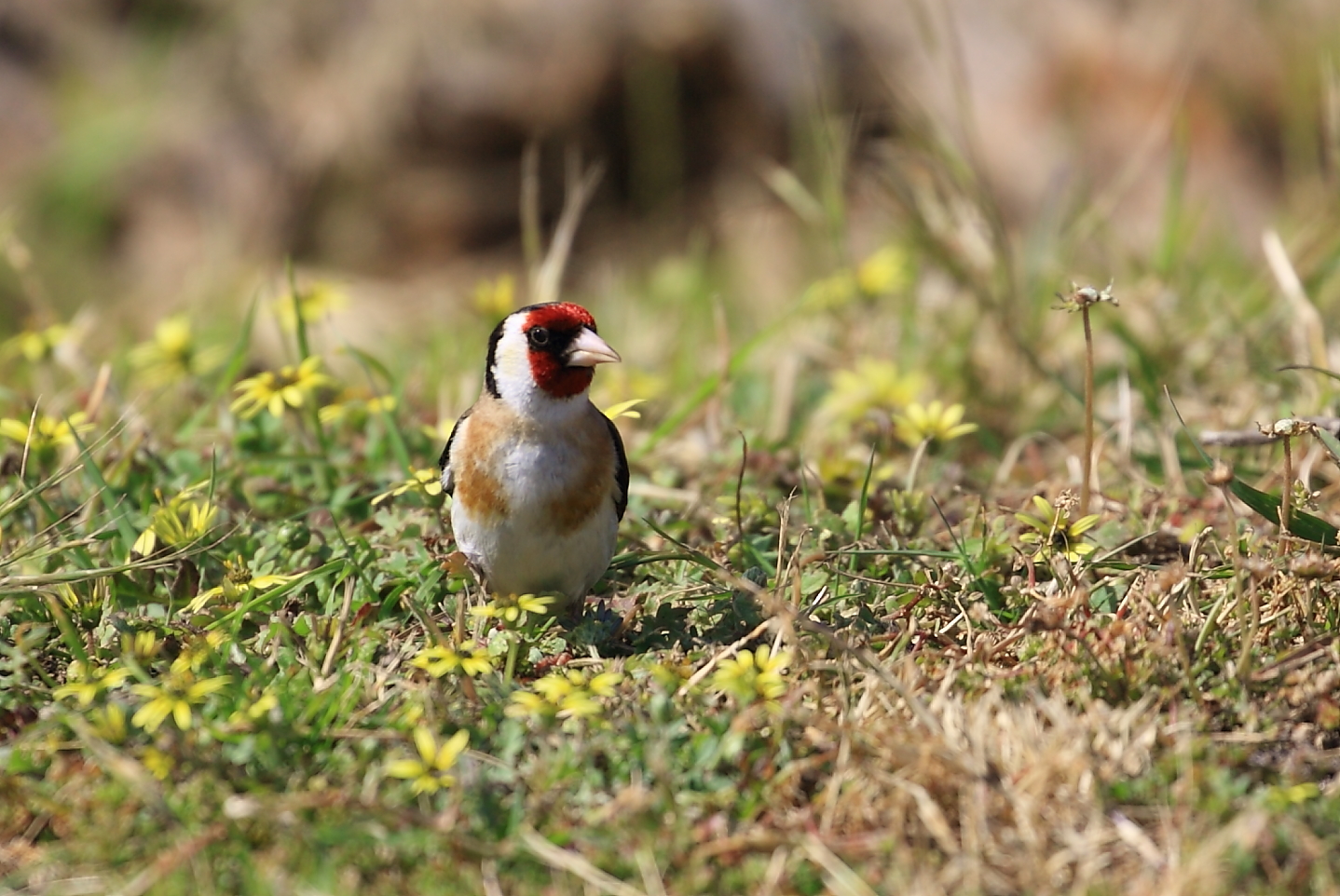


Another introduced species, slightly smaller and leaner than a House Sparrow, but much more colourful and attractive. It has a distinctive red, black and white coloured head with buff sides and streaked yellow wings, which makes for a wonderful splash of colour especially when in flight as a flock. Not common at The Cape, but can be seen individually or in small flocks of around 20 in the grassy open spaces foraging on the ground and also in the south east sector amongst the low shrub and grass.
